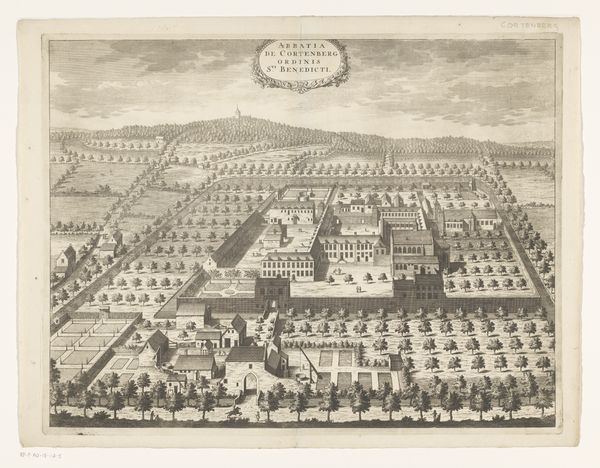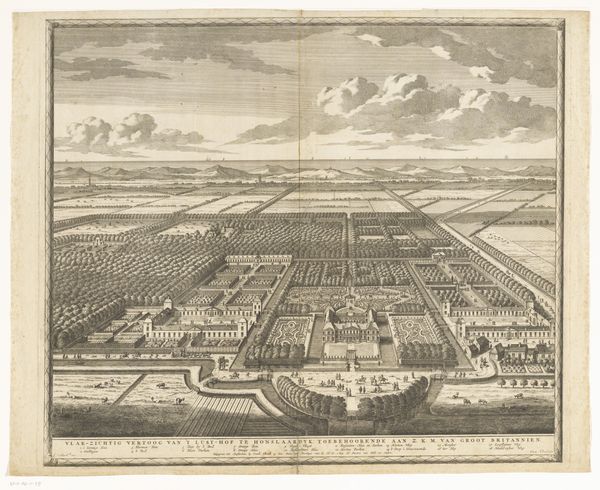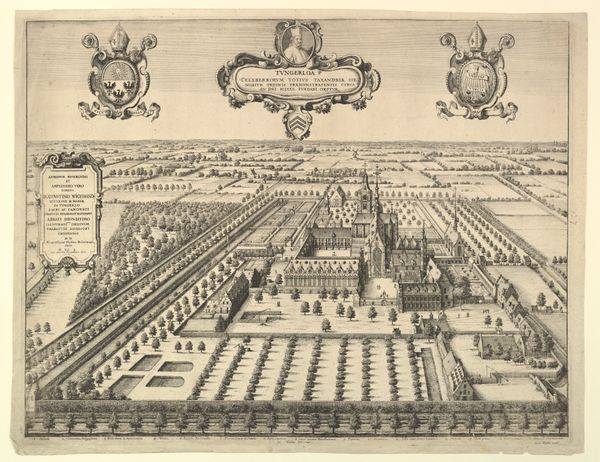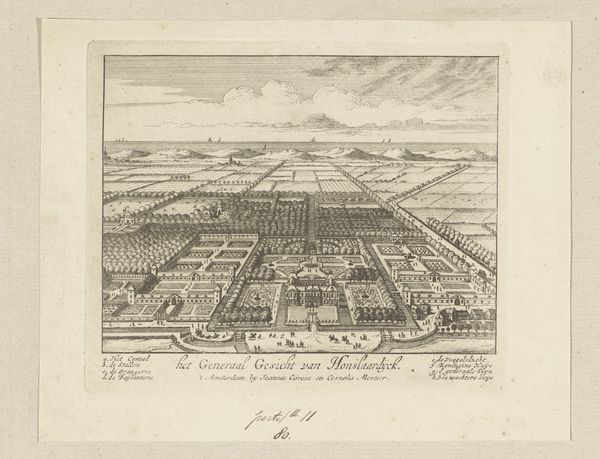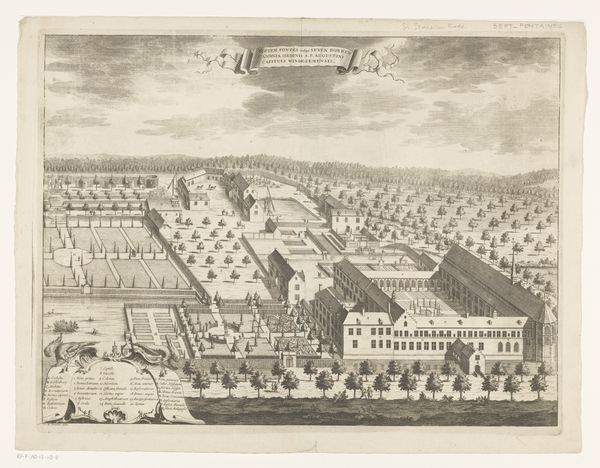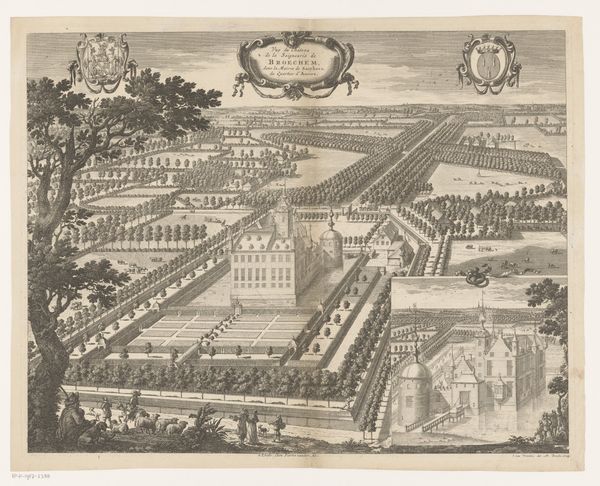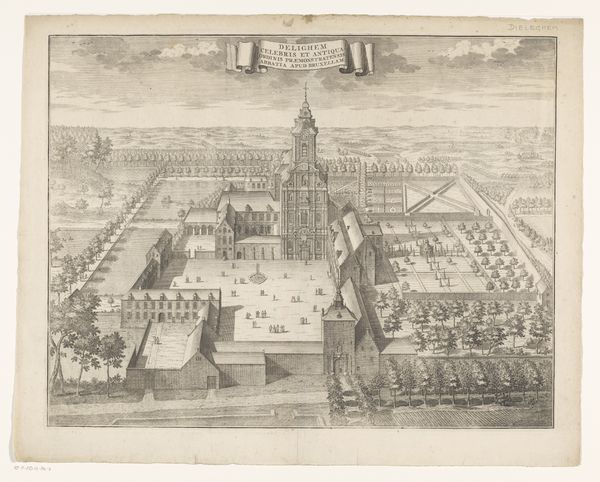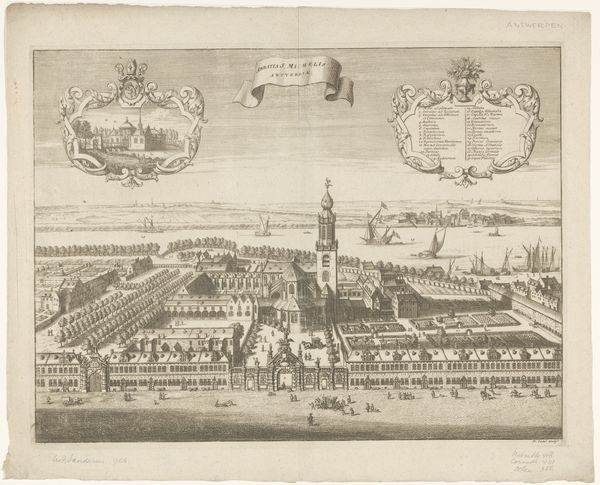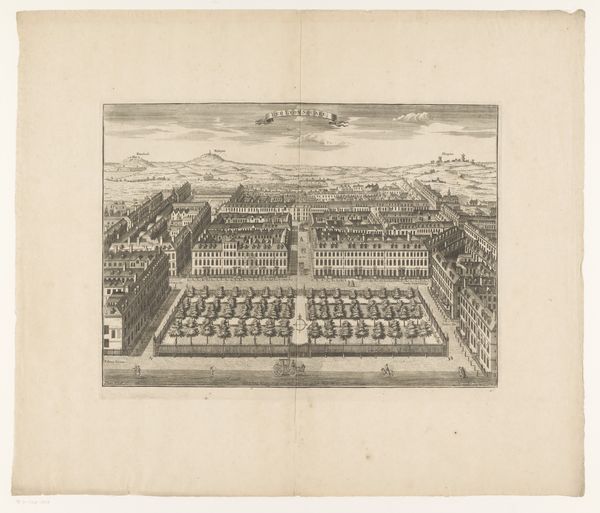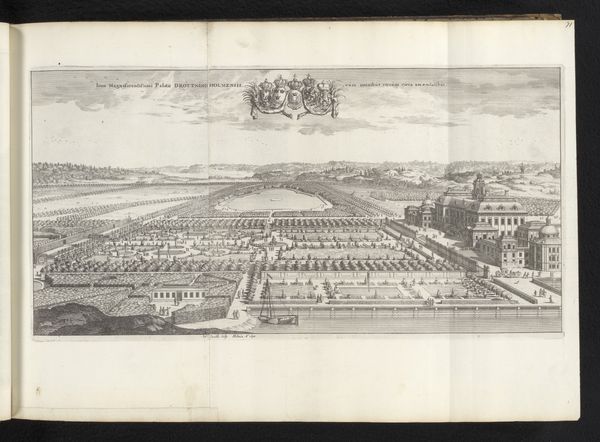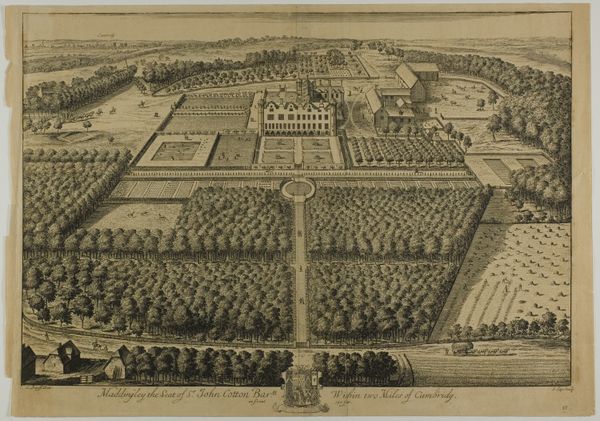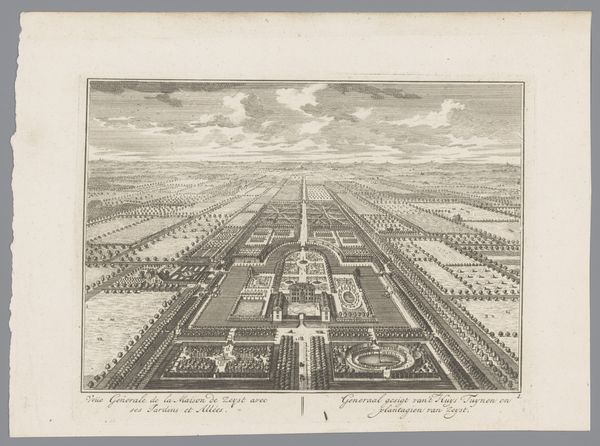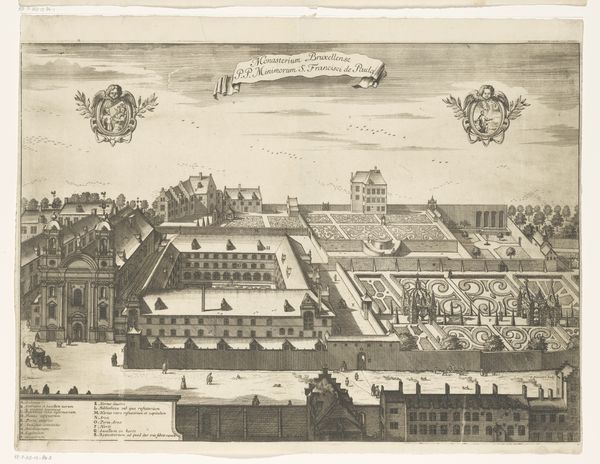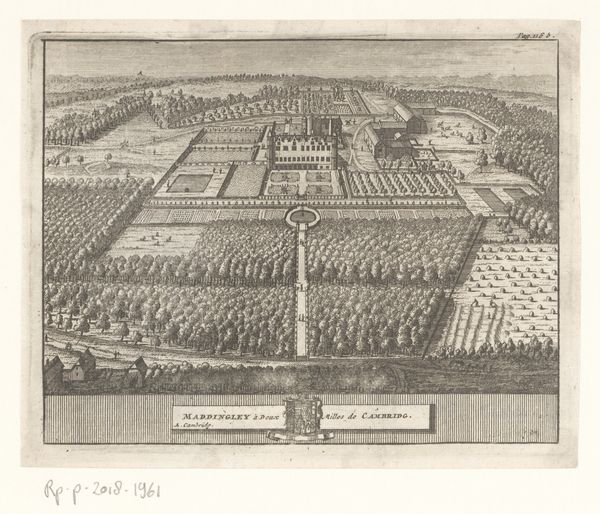
print, engraving, architecture
#
baroque
# print
#
old engraving style
#
landscape
#
cityscape
#
engraving
#
architecture
Dimensions: height 354 mm, width 472 mm
Copyright: Rijks Museum: Open Domain
Editor: Here we have David Coster’s “Gezicht op de Abdij van Tongerlo,” created between 1726 and 1734 – an intricate engraving. The detail is incredible, but the perspective feels almost… idealized. What do you see in this piece, from your perspective? Curator: I see a carefully constructed projection of power. The very act of commissioning and creating such a detailed cityscape served to visually assert the Abbey’s importance within the region. Editor: You think this image projects authority? How so? Curator: Think about it: in the early 18th century, engravings like this weren’t mass produced like posters today. They were expensive and circulated amongst a relatively elite audience, showcasing the Abbey’s wealth, influence, and perhaps even a carefully curated image of itself. Consider who the intended viewers were. How might they have interpreted this image, given the socio-political climate of the time? Editor: That's a great point. It’s not just a pretty picture; it’s a statement. I hadn't considered the power dynamics at play in distributing these images. The Baroque style adds a layer of grandeur too, right? Curator: Exactly. The Baroque, with its emphasis on drama and detail, reinforces that message of authority and sophistication. Even the act of mapping, of surveying and presenting this comprehensive view, asserts a kind of ownership and control. Editor: I’m starting to see this less as a simple depiction and more as a strategic communication. Thanks for opening my eyes to the politics of imagery here. Curator: It’s a reminder that art never exists in a vacuum. Exploring its historical context is crucial to truly understanding its power.
Comments
No comments
Be the first to comment and join the conversation on the ultimate creative platform.
